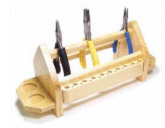Welcome to QTE North America. Our website is being updated, therefore checkout is temporarily not available.
Please call us at 909-481-5115, or email us at info@Qtena.com to order or for more information.
DIAMOND TESTING
A diamond tester is a simple and reliable device used for testing diamonds. It distinguishes natural diamonds from most natural or synthetic gemstones, except Moissanite. Diamond test results are indicated by visual light and audible beeps.
Diamond testers send heat into the stone, measuring how quickly the stone conducts heat. Each gemstone mineral has a different conductivity rating.
Moissanite was first introduced to the jewelry market in 1998. It has optical qualities exceeding those of diamond. Often regarded as an excellent fine jewel, it has become a popular alternative to diamonds.
After testing diamonds and determining that your stones are probably diamonds, run another test using a Moissanite tester to be certain they are not Moissanites.
When testing diamonds, hold the diamond tester with your fingertips on the pads located on the sides of the tester. This is important. Do not grip the diamond tester like a flashlight.
Diamond testers with a metal detector will warn you if the tip of the sensor is touching any metal prong or mounting. Metal is highly conductive and will give you a false positive reading.
Accurate results are usually obtained when the diamond testing is done in a room where the ambient air temperature is fairly constant, and between 65F to 80F.
Be sure the tip of the sensor is pressed firmly against the gem. The wide surface of the gem table is best, but the gem’s girdle is also acceptable.
If you need to run multiple tests on a stone, let it cool down between tests. This is particularly important with smaller stones that are 10 points or less.
Some diamond testers need several seconds to warm up, and a few seconds between tests to reset. Others warm up or reset almost instantly. Refer to your owner’s manual for this information. If you will be doing volume diamond testing use a diamond tester that warms up and resets quickly.
Most diamond testers run on batteries. If you will be sitting at a bench and testing diamonds for hours and hours, consider using one with an AC adapter.
© QTE North America, Inc.
|











